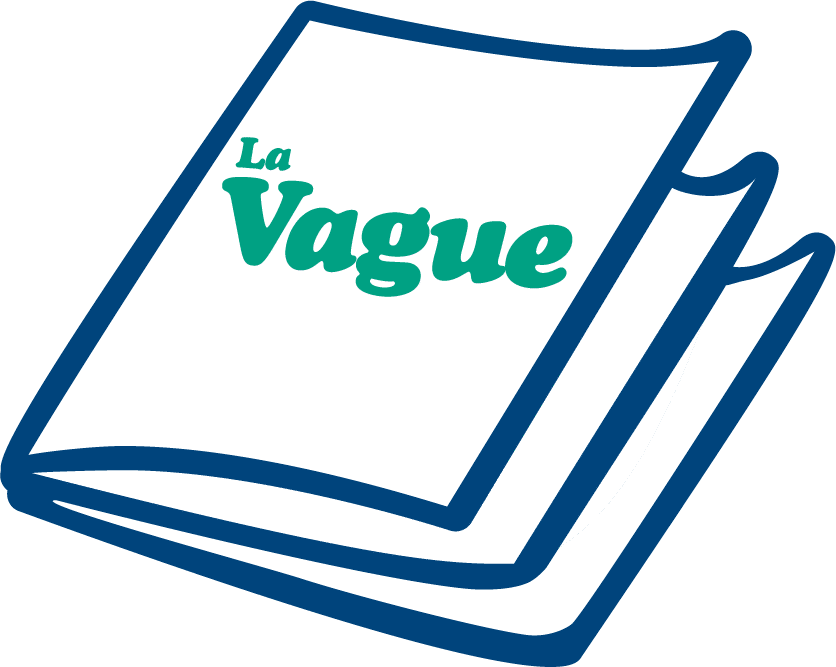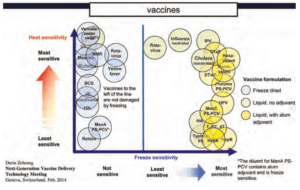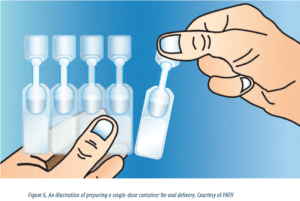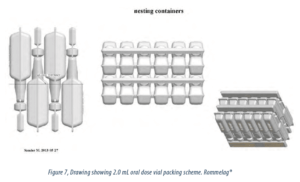Sommaire
- Filtration stérilisante sur BFS Réglementation et usages pour garantir la stérilité
- Vaccines and other biological pharmaceuticals aseptic packing utilizing Blow/Fill/Seal technology
- Cahier Pratique – Maitrise des gaz à usage pharmaceutique
- L’importance de la maîtrise du poids des contenants pharmaceutiques faits par BFS
- Single best way to deliver
- Propositions du GIC A3P pour la révision de l’Annexe 1
- Management – «Quelques pensées sur la direction de sites et le leadership, Partage d’expérience et de petits trucs…»
Blow/Fill/Seal (BFS) technology has been used to package pharmaceutical products since the 1960’s. The advanced aseptic process uses plastic polymer material to form, fill and hermetically seal a container in a sequential process. Various waters and small molecule drugs are the traditional products filled in the areas of IV and irrigation solutions, ophthalmic OTC and drugs, nebulized inhalation drugs, and small volume injectable products.
The high automation level, high aseptic assurance, low intrinsic and extrinsic particle load found in the containers has increased interest in BFS technology, also of products that traditionally use other packaging technologies: vaccines and other biological products. Vaccine and drug products that are being supplied to the developing world can take advantage of BFS technology which has been developed for high efficiency, quality and low cost drug production. In order to test these biological products it was necessary to have a facility that would allow development of safe product packaging. maropack (Zell, Switzerland) installed the first cool-BFS-technology into a BSL-2 rated facility to provide a place to fill and package all different kind of biological products.
Introduction
The advantages of Blow/Fill/Seal (BFS) filling technology are known. The BFS advanced aseptic process reduces the need for human intervention during the filling process compared to conventional aseptic filling. Taking people out removes the primary contamination sources from the filling environment. BFS is primarily used to manufacture single unit dose products. Since the process forms a fully sealed container it lends itself to producing a container that is only as large as the dose size requires. This in turn leads to improved efficiencies in secondary packaging. The container closure is also designed to meet products application requirements; an adapter to a standardized container is not required.
BFS is a robust method to produce aseptic pharmaceuticals products. BFS has been used in the pharmaceutical industry since the early 1960’s. During the last 20 years it has become more prevalent for packaging aseptic pharmaceutical products. Modern BFS technology is considered an Advanced Aseptic Processing technology and is accepted widely by regulatory authorities (e.g. FDA, USP, EMEA). The BFS technology is referenced in regulatory documents [3][4]
Open parison (shuttling) BFS machines operate using the following steps: [5]
• Supply a new polymer resin to the Blow/Fill/Seal system
• Heat a plastic polymer resin
• Extrude it to form a parison (a tubular form of the hot resin)
• Close the mould onto the parison
• Cut the parison with a hightemperature knife
• Move the parison under the blow-fill needle (mandrel)
• Inflate it to the shape of the mold walls
• Fill the formed container with the liquid product
• Remove the mandrel
• Seal

The product is then discharged to a nonsterile area for secondary packaging: e.g. labeling, packaging and cartoning. (Figure 1).
This process is completed within 12-15 seconds and is contained within a controlled environment. There are very few human interventions in the process and none into the classified area around the point of fill. Studies have shown that Blow/Fill/Seal aseptic filling systems have up to one tenth the contamination rates as traditional aseptic liquid filling operations [6]. Intrinsic and extrinsic particle in containers produced with BFS technology are also significantly lower than they are found in containers filled with other technologies.[7]
Blow/Fill/Seal has a higher automation level and is simpler (fewer steps) than traditional aseptic filling. The diagrams below illustrate the two processes (Figure 2 and 3). The product preparation for sterile filling is the same for both processes. [8]
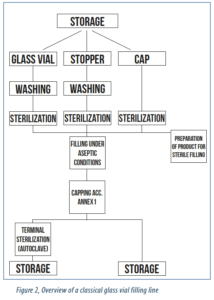 | 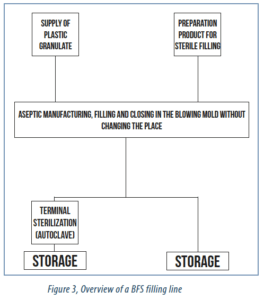 |
Bringing biological product to Blow/Fill/Seal technology
A challenge to the BFS process in comparison to conventional filling is the inherent heat within the BFS process. This heat needs to be diminished prior to the plastic having contact with the product being filled. Plastic is extruded at 170 – 220°C depending on the resin being used. The cooling process starts as soon as the plastic parison leaves the extruder head. The temperature controlled metal copper alloy moulds further continue the cooling process as they close and form the primary container. The product filled into the container provides final plastic cooling process.
Some pharmaceutical and most biological products are sensitive to heat at some level (including biological substances such as vaccines or monoclonal antibodies) [12]. Exposure to a particular temperature for a certain time will cause a product to deteriorate. The Blow/Fill/Seal process does impart some heat energy into the product. The key is to minimize the amount of energy and to limit the exposure time. There was no real experimental investigation to show if this impact hurt the product or not. Stability is a function of temperature exposure over time and simulations have limited values only [10][11].
Many parameters influence the temperature of the formulation inside a BFS process. Success was found by actively in controlling the product temperature from bulk tank to point of fill. The temperature impact to the product is hereby predictable and directly related to the mass of product being filled in relationship to the plastic container mass. A bottelpack 3012 M has been modified for CoolBFS® and a DoE was done in a specific separated biological facility (BSL2) at maropack. [9]
It is important to have accurate knowledge about the product’s heat sensitivity. The BFS process does impart energy into the product but in a way that can be controlled and dissipated within a short time. Keeping the product well under a defined upper temperature and bringing it back to room or a lower temperature within a short period is a straight forward process that can be defined and tested. Further investigations with open parison (rotary type) BFS machine technology were performed at the machine manufacturing plant with water and placebo.
Rotary BFS technology has an even higher capacity and higher efficiencies for unit-dose applications than the shuttling type BFS technology.
The test showed that with proper parameter settings and system modifications the open parison BFS system also allows approximation of the product’s final temperature profile.
Advantages for Vaccines filling with Blow/Fill/Seal technology
Blow/Fill/Seal offers other benefits to vaccines delivered to the developing world:
• Unit dose system – only the dose needed is utilized.
• For a multi-dose only on VMM is necessary. Opened containers should be discarded after opening.
• Aseptic technology – no preservatives are necessary
• Highly automated systems – low losses during production
• Breakage – BFS plastic vials are very robust and able to withstand transport and freezing
• Anti-counterfeiting: containers that have been used cannot be resealed to resemble unused product. The BFS process thereby minimizes production of counterfeit products.
• The containers withstand -80°C (freezing capabilities).
• Custom designs to minimize space required per dose.
PATH is working on a concept that allows multiple single dose containers to share a common Vaccine Vial Monitor (VVM) sticker and to minimize per dose packing space. The “multi-mono-dose” allows users to separate a single container from the strip while still keeping the remaining containers sealed and associated with the VVM. This concept is being considered for use with BFS and other packaging technologies. [14]
In the end the target is to deliver cost effective vaccines with the proper immune responses. By minimizing losses in the manufacturing, transport and storage, BFS containers can provide excellent cost advantage.
Vaccines are also coming to light in regard to potential pandemic outbreaks. In this case BFS technology can play a role in the production of large vaccine quantities in a short period of time. The quality issue around glass and suppliers ability to quickly greatly expand supply in a short period of time is known – e.g. It is not possible to go out and buy 200 million syringes tomorrow. Polymer resins used by pharmaceutical companies (including BFS use) make up a very small percentage of the polymer resins used in the US and the world. In a situation where production needed to vastly increase in a very short time there would be no issues around sourcing the raw materials necessary. However would necessitate having the aseptic production facilities that use resin ready for this production.
What about costs ?
In the US Inhalation drugs for usage together with nebulizers were traditionally produced as preserved products packaged in multidose containers. The per-dose cost was high and the preservatives sometimes had adverse reactions with the patient’s lungs. In the 1980’s inhalation drugs moved to single unitdose aseptically filled vials. Since that time the price per dose has seen approximately a 10 fold decrease in cost whereas supply and availability have vastly increased. Currently there are more than 1.5 billion BFS vials supplying inhalation drugs to the US. Technically BFS machine capacities during this time have increased 3 fold and are more efficient to run – higher automation, fewer operators, higher efficiency, less scrap and fewer losses. Unitdose BFS also offers further benefits such as preservative removal, accurate dosing and easier determination of patient compliance. Interest in providing economical vaccine supply has brought interest in utilization of BFS containers. Emerging markets are going to make up a larger portion of drug deliveries in the future. Pharmaceutical companies recognizing this have been making changes to their processes in order to meet the requirements for the new product demand.
GAVI alliance is working to reduce the cost for vaccines to be delivered to the developing world. The target is lowering the cost under $1.00 per dose. [13] The cost to produce a vaccine with traditional methods had not gone down as fast. This means that much of the cost reduction needs to come from processes outside of the vaccine manufacture. BFS packaging can reduce these costs with its high speed and highly automated primary packaging system and by reducing the cold chain footprint.
The benefits developed within the inhalation drug market can be directly applied to unitdose non-preserved vaccines. Since the BFS system can be customized for individual applications the inhalation vial can be changed to form containers from 0.1 mL to 3 mL with closures designed for intranasal, injection and oral dose functionality.

Stephan GSCHWIND – MAROPACK AG

Tim KRAM – ROMMELAG USA

Dr. Otto SCHULBERT – MAROPACK AG/h2>
Partager l’article
Références
1. Tim Kram, rommelag USA, Inc., Evergreen Colorado, 80439, USA
2. Otto Schubert, maropack AG, Zell, Canton Luzern, CH-6144, Switzerland
3. European Commission, EU Guidelines to Good Manufacturing Practice. Annex 1, Manufacture of Sterile Medicinal Products (Brussels, Nov. 2008).
4. FDA, Guidance for Industry. Sterile Drug Products Produced by Aseptic Processing – Current Good Manufacturing Practice (Rockville, MD, Sept. 2004).
5. R. Oschmann, and O.E. Schubert, Eds, Blow-Fill-Seal Technology, (CRC Press, Stuttgart, 1999).
6. B. Ljungqvist et al., PDA J. Pharm. Sci. Technol. 60 (4), 254-258 (2006).
7. Sundström, S., et al., European Journal of Parenteral & Pharmaceutical Sciences, Vol. 15, No. 3, pp. 87-92 (UK, 2010).
8. Otto Schubert, Tim Kram, Utilizing Advanced Aseptic Blow/Fill/Seal Packing Technology, 2014 ISPE Annual Meeting, 12-15 October 2014, Las Vegas NV
9. Blow-Fill-Seal Aseptic Packaging for Heat Sensitive Biotech Products, Dr. Otto Schubert, maropack AG, Stephan Gschwind, maropack AG, Tim Kram, rommelag USA, Inc. , 2014 AAPS National Biotechnology Conference, San Diego, California, USA
10. Wei Liu et al. BioPharma International Vol 24,(7), July 2011, pp 22-30
11. Jeff Price, Heat Transfer Analysis of BFS Process, Annual Meeting BFSIOA Boston Massachusetts 1998
12. Steven J. Shire in Rodney Pearlman, Y. John Wang (eds) Formulation, Characterization and stability of protein drugs Vol 9: Case Histories, pp 393-422, Kluwer Academic Publishers, 2002
13. Dr. Orin Levine, “2015: Full Speed Ahead,” The Huffington Post, January 2015.
14. Darin Zehrung, “Developments in Novel Vaccine and Pharmaceutical Delivery Technologies that Address Global Health Needs,” PDA Euope, Parenteral Packaging Conference, March 2015


